Which two settings must be configured for SD-WAN Central Management? (Choose two.)
An administrator would like to review, approve, or reject all the firewall policy changes made by the junior
administrators.
How should the Workspace mode be configured on FortiManager?
View the following exhibit.
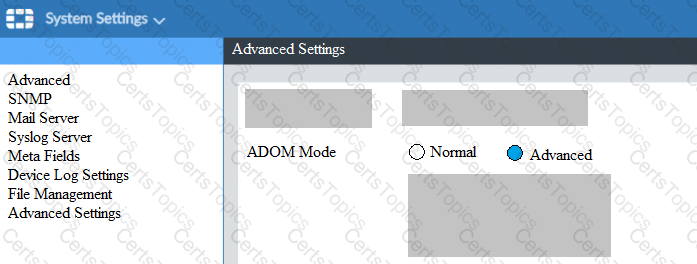
What is the purpose of setting ADOM Mode to Advanced?
Which three settings are the factory default settings on FortiManager? (Choose three.)
You are moving managed FortiGate devices from one ADOM to a new ADOM.
Which statement correctly describes the expected result?
Refer to the exhibit.

Which two statements about the output are true? (Choose two.)
When an installation is performed from FortiManager, what is the recovery logic used between FortiManager and FortiGate for an FGFM tunnel?
In the event that the primary FortiManager fails, which of the following actions must be performed to return the FortiManager HA to a working state?
Refer to the exhibit.
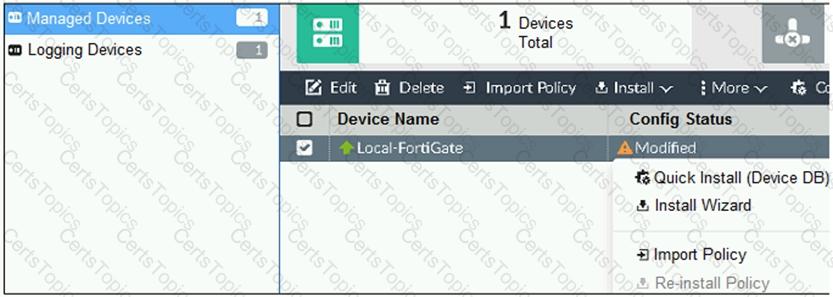
You are using the Quick Install option to install configuration changes on the managed FortiGate.
Which two statements correctly describe the result? (Choose two.)
An administrator with the Super_User profile is unable to log in to FortiManager because of an authentication failure message.
Which troubleshooting step should you take to resolve the issue?
An administrator configures a new firewall policy on FortiManager and has not yet pushed the changes to the
managed FortiGate.
In which database will the configuration be saved?
An administrator has assigned a global policy package to custom ADOM1. Then the administrator creates a new policy package, Fortinet, in the custom ADOM1.
Which statement about the global policy package assignment to the newly-created policy package Fortinet is true?
Which two statements regarding device management on FortiManager are true? (Choose two.)
Refer to the exhibit.

An administrator has configured the command shown in the exhibit on FortiManager. A configuration change has been installed from FortiManager to the managed FortiGate that causes the FGFM tunnel to go down for more than 15 minutes.
What is the purpose of this command?
What is the purpose of ADOM revisions?
Which two statements about Security Fabric integration with FortiManager are true? (Choose two.)
Refer to the exhibit.
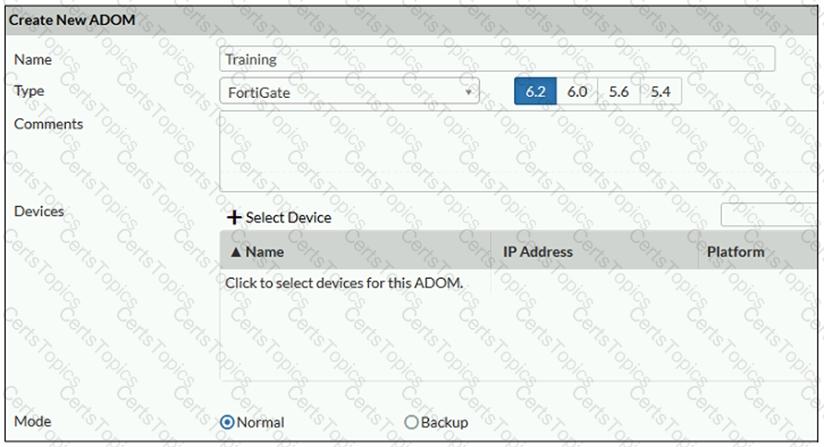
Which two statements about an ADOM set in Normal mode on FortiManager are true? (Choose two.)
An administrator is replacing a device on FortiManager by running the following command:
execute device replace sn
What device name and serial number must the administrator use?
An administrator has enabled Service Access on FortiManager.
What is the purpose of Service Access on the FortiManager interface?
Refer to the exhibit.
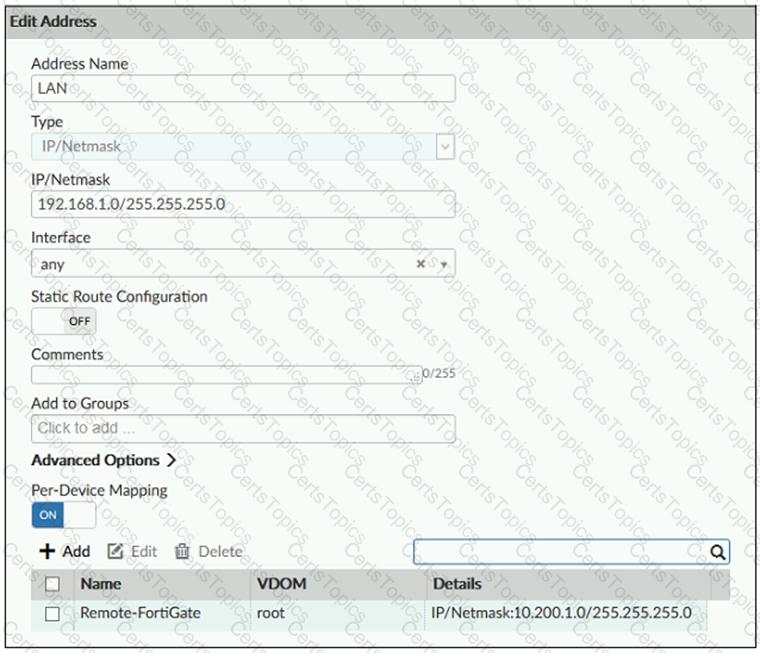
An administrator has created a firewall address object, Training which is used in the Local-FortiGate policy package.
When the installation operation is performed, which IP/Netmask will be installed on the Local-FortiGate, for the Training firewall address object?
View the following exhibit.
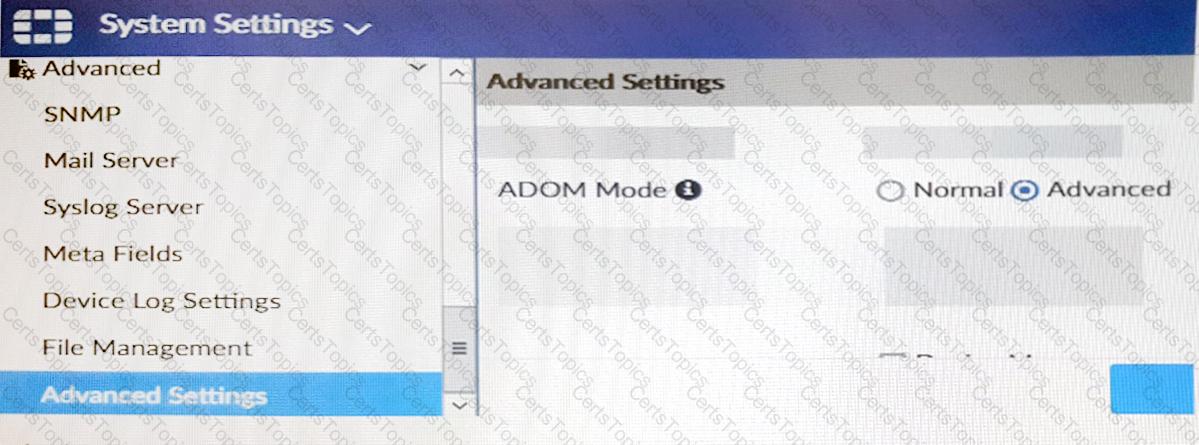
Which of the following statements are true based on this configuration setting? (Choose two.)
Which of the following statements are true regarding reverting to previous revision version from the revision history? (Choose two.)
An administrator would like to create an SD-WAN using central management. What steps does the
administrator need to perform to create an SD-WAN using central management?
An administrator would like to authorize a newly-installed AP using AP Manager. What steps does the administrator need to perform to authorize an AP?
Refer to the exhibit
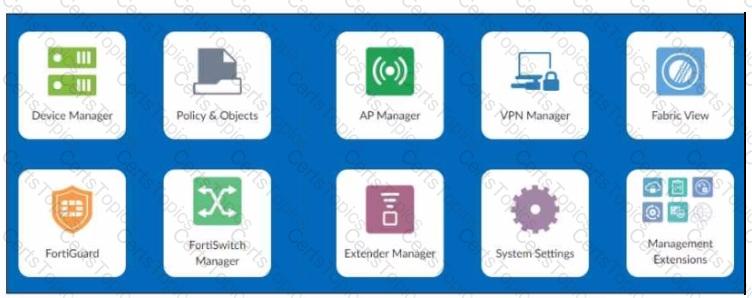
An administrator logs in to the FortiManager GUI and sees the panes shown in the exhibit.
Which two reasons can explain why the FortiAnalyzer feature panes do not appear? (Choose two.)
An administrator has enabled Service Access on FortiManager. What is the purpose of Service Access on the FortiManager interface?
An administrator is replacing a failed device on FortiManager by running the following command:
execute device replace sn
Which device name and serial number must the administrator use?
What will happen if FortiAnalyzer features are enabled on FortiManager?
Which three settings are the factory default settings on FortiManager? (Choose three.)
Which of the following statements are true regarding schedule backup of FortiManager? (Choose two.)